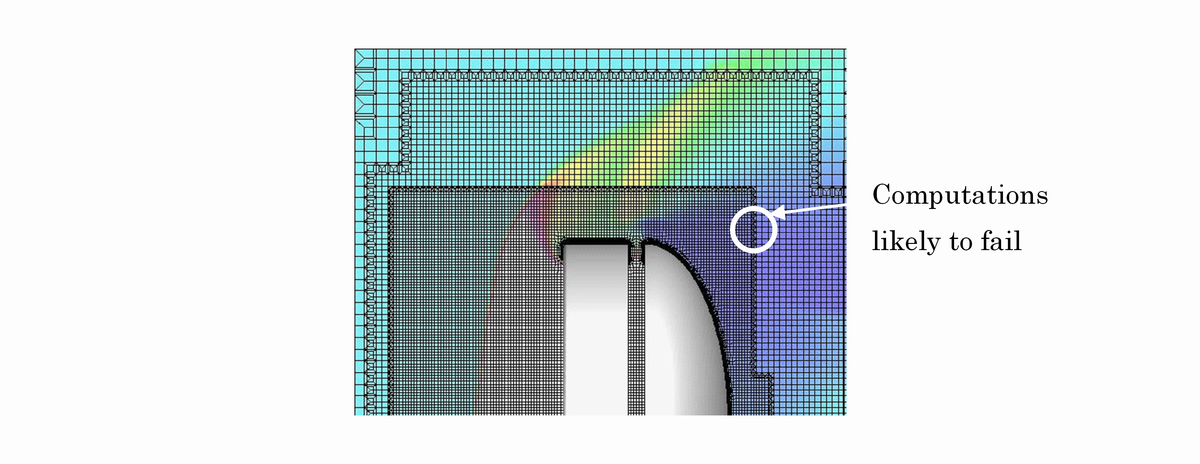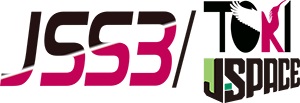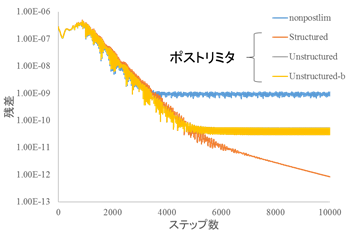Incorporation of High Resolution Schemes into Flow Analysis Code 'FaSTAR'
JAXA Supercomputer System Annual Report April 2016-March 2017
Report Number: R16E0018
- Responsible Representative: Yuichi Matsuo(Aeronautical Technology Directorate, Numerical Simulation Research Unit)
- Contact Information: Keiichi Kitamura(kitamura@ynu.ac.jp)
- Members: Takuya Aogaki, Atsushi Hashimoto, Keiichi Kitamura, Kanta Fukumoto, Koki Takabayashi, Toshimasa Takahama, Ayano Inatomi, Ryusuke Yamagata, Toshiaki Harada
- Subject Category: Basic Research(CFD)
Abstract
New, high resolution schemes 'Post Limiter' and 'HR-SLAU2'(numerical flux) have been incorporated into the numerical analysis code 'FaSTAR'. The enhanced 'FaSTAR' actually attained higher resolution than the original version, and its normal operation on JSS2 was confirmed. We therefore expect its wider applications in many flow analyses.
Goal
In order to realize more accurate simulations with less computational cost, high resolution schemes have been incorporated into the flow analysis code 'FaSTAR'. In addition, to expand its potential users, we have tested operation of the enhanced version of 'FaSTAR' on JSS2.
Objective
To confirm that the 'FaSTAR' equipped with high resolution schemes actually attain higher resolutions than the original 'FaSTAR', and that it is usable on JSS2.
References and Links
N/A
Use of the Supercomputer
One of our objectives was to confirm that the high-resolution 'FaSTAR' ran on JSS2 without any trouble.
Necessity of the Supercomputer
JSS2 was necessary because one of our objectives was to confirm that the high-resolution 'FaSTAR' ran on JSS2 without any trouble.
Achievements of the Year
The high-resolution scheme 'Post Limiter'has been incorporated into FaSTAR, and tested on several 3D aerodynamic problems. Those computations have been conducted on JSS2, without any trouble. From Fig. 1, with the help of Post Limiter, asymmetric vortices around a slender body (which did not appear without the Post Limiter on a Coarse grid, whereas did on a Baseline grid) were successfully reproduced on the Coarse grid, which is twice coarser near the body than the Baseline grid. In Fig. 2, convergence improvements have been observed by the Post Limiter. In flow simulations aroundsupersonic parachutes, the original Post Limiter destabilized the computations where cell geometries change. However, this weakness has been overcome by the present modification, in which the cell geometries (cell-aspect-ratio-like number) are taken into account (Fig. 3). In addition, the high-resolution scheme 'HR-SLAU2'flux function has also been incorporated into FaSTAR and verified (not shown).

Fig.3:Supersonic Flow Computation around Parachute by using Post Limiter, stabilized by geometrical consideration for 3D Unstructured Grids (M=2.0)
Publications
Presentations
1) Aogaki, T., Kitamura, K., and Nonaka, S.: Computational Study of Aerodynamic Characteristics of Reusable Rocket at High-Angle-of-Attack, AIAA Paper 2017-1212, 55th AIAA Aerospace Sciences Meeting (AIAA SciTech 2017), Grapevine, TX, Jan. 2017.
Computational Information
- Parallelization Methods: Process Parallelization
- Process Parallelization Methods: MPI
- Thread Parallelization Methods: n/a
- Number of Processes: maximum 1024
- Number of Threads per Process: 1
- Number of Nodes Used: maximum 32
- Elapsed Time per Case (Hours): 8.5
- Number of Cases: 80
Resources Used
Total Amount of Virtual Cost(Yen): 5,311,697
Breakdown List by Resources
| System Name | Amount of Core Time(core x hours) | Virtual Cost(Yen) |
|---|---|---|
| SORA-MA | 3,156,646.96 | 5,093,782 |
| SORA-PP | 6,475.46 | 55,287 |
| SORA-LM | 1,858.33 | 41,812 |
| SORA-TPP | 0.00 | 0 |
| File System Name | Storage assigned(GiB) | Virtual Cost(Yen) |
|---|---|---|
| /home | 48.27 | 455 |
| /data | 1,019.37 | 9,615 |
| /ltmp | 9,874.14 | 93,143 |
| Archiving System Name | Storage used(TiB) | Virtual Cost(Yen) |
|---|---|---|
| J-SPACE | 5.70 | 17,600 |
Note: Virtual Cost=amount of cost, using the unit price list of JAXA Facility Utilization program(2016)
JAXA Supercomputer System Annual Report April 2016-March 2017




